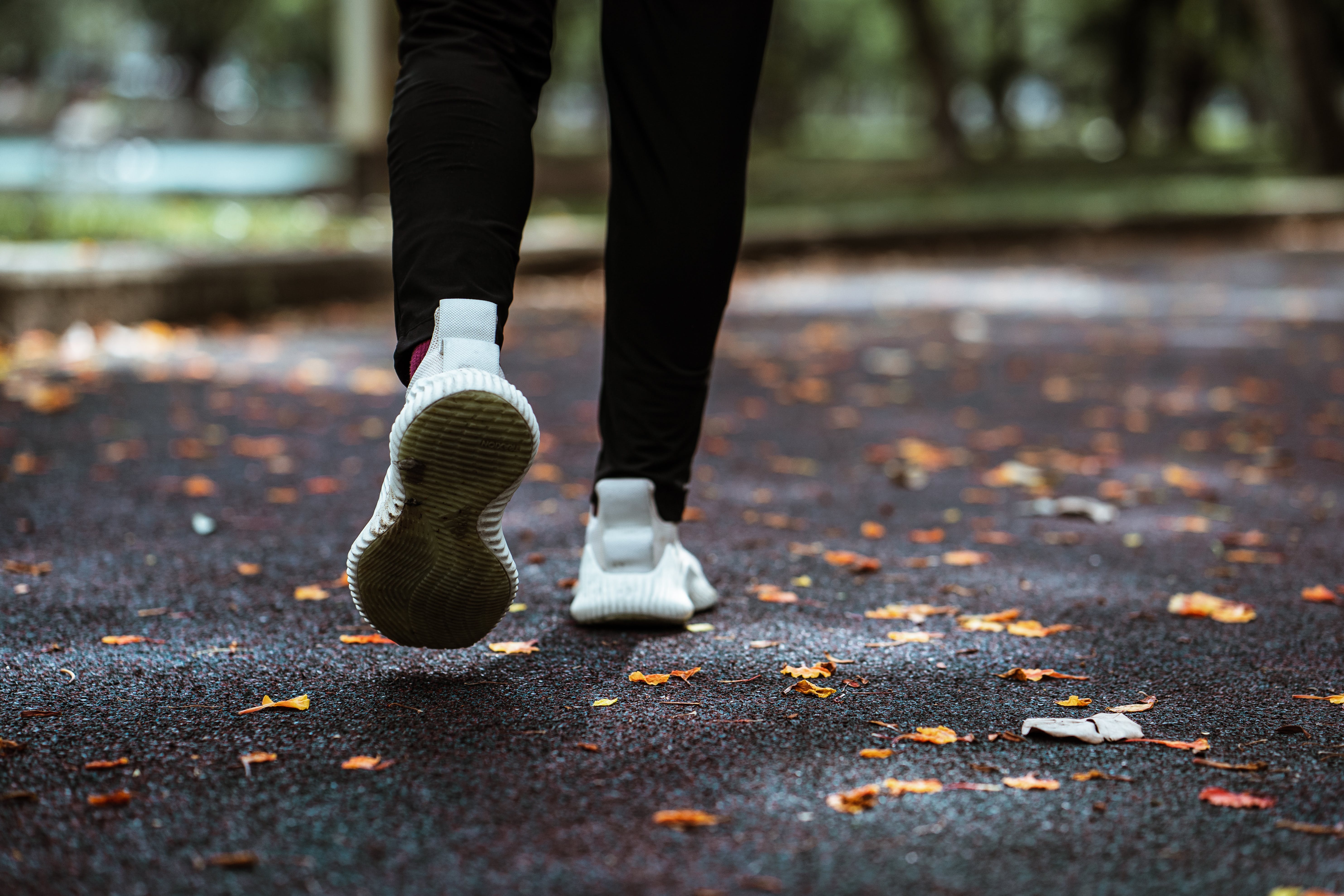Running is more than just putting one foot in front of the other; it’s about mastering the art of movement. To understand the basics of running technique, one must consider several key components that influence performance and minimize injury risk. Proper posture, foot strike, and cadence are essential elements that every runner should focus on.
1. Posture: A strong, upright posture is crucial. Keep your head level, shoulders relaxed, and arms bent at a 90-degree angle. This alignment allows for better airflow and energy efficiency.
2. Foot Strike: Pay attention to how your foot hits the ground. Ideally, aim for a midfoot strike rather than landing on your heels, as this can help to absorb shock and propel you forward more effectively.
3. Cadence: This refers to the number of steps you take per minute. A higher cadence can reduce the risk of injury and improve speed. Most efficient runners aim for a cadence between 170-180 strides per minute.
Understanding these fundamentals can significantly enhance your running experience. Whether you’re a beginner or looking to refine your skills, focusing on these techniques will lead you to better performance and greater enjoyment in your runs. Visit our website to learn more and get started today! Click here.
Importance of Proper Running Form

When it comes to running, the saying “form follows function” holds true. The importance of proper running form cannot be overstated, as it is key to maximizing performance while minimizing the risk of injury. Here are a few reasons why maintaining good form is essential:
1. Injury Prevention: Poor running form can lead to various injuries, such as shin splints, runner’s knee, and plantar fasciitis. By focusing on your technique, you can significantly reduce the strain on your joints and muscles, allowing for a safer running experience.
2. Improved Efficiency: Proper form helps you use your energy more efficiently. When you run with correct posture and mechanics, you can maintain a faster pace with less effort. This efficiency translates to longer distances and better overall performance.
3. Enhanced Performance: Runners with good form are often able to perform better in races and training sessions. By optimizing your biomechanics, you can improve your speed and endurance, giving you a competitive edge.
4. Increased Comfort: Running with proper form can make the experience more enjoyable. When your body moves as it should, you’re likely to feel less fatigue and discomfort, allowing you to focus on the joy of running.
In summary, proper running form is vital for every runner, whether you’re participating in casual jogs or competitive races. By prioritizing your technique, you can enhance your running experience and achieve your fitness goals.
Key Components of Efficient Running

To run efficiently, it is crucial to understand the key components of efficient running. These elements work together to create a smooth and effective running experience. Let’s break down these components:
1. Posture: Maintaining an upright posture is fundamental. Keep your head aligned with your spine, shoulders relaxed, and chest open. This alignment allows for optimal airflow and reduces the risk of fatigue.
2. Foot Strike: Your foot strike plays a significant role in how efficiently you run. Aim to land mid-foot rather than on your heels or toes. A mid-foot strike can help absorb impact better and minimize injury risk.
3. Stride Length and Frequency: Finding the right balance between stride length and frequency is essential. A shorter, quicker stride can improve your cadence and decrease the time your foot is in contact with the ground, leading to a more efficient run.
4. Arm Movement: Your arms should move fluidly at your sides, helping to drive your legs. Keep your elbows bent at about 90 degrees and swing your arms forward and back, not across your body. This movement aids in maintaining balance and rhythm.
5. Breathing: Effective breathing techniques can enhance your running efficiency. Practice deep belly breathing rather than shallow chest breathing to ensure that your body receives adequate oxygen during your runs.
By focusing on these key components, you can improve your running efficiency, making each step feel lighter and more purposeful. With practice, you will find that efficient running not only enhances your performance but also elevates your overall running experience.
Common Running Mistakes to Avoid

As you embark on your running journey, being aware of the common running mistakes to avoid can significantly enhance your performance and minimize the risk of injury. Here are some pitfalls that many runners encounter:
1. Poor Footwear: Wearing the wrong shoes is a frequent mistake. Proper running shoes should fit well, provide adequate support, and cater to your specific foot type. Investing in a good pair can make a substantial difference in comfort and performance.
2. Ignoring Warm-Up and Cool Down: Skipping warm-up exercises or cool-down stretches can lead to injuries. Always take time to properly warm up your muscles before a run and cool down afterward to facilitate recovery.
3. Overtraining: Many runners fall into the trap of pushing themselves too hard without allowing sufficient rest. Overtraining can lead to fatigue and injuries. It’s crucial to incorporate rest days into your routine and listen to your body’s signals.
4. Improper Hydration: Failing to hydrate adequately before, during, and after runs can severely impact your performance. Keep yourself well-hydrated to maintain energy levels and prevent cramps.
5. Neglecting Nutrition: What you eat plays a vital role in your running success. Consuming a diet lacking in essential nutrients can hinder your energy levels and recovery. Focus on a balanced diet rich in carbohydrates, proteins, and healthy fats to fuel your runs.
6. Running with a Poor Form: Improper running form can lead to various injuries over time. Be mindful of your posture, foot strike, and arm movement as discussed in previous sections. Consider running with a coach or using video analysis to evaluate and improve your form.
By recognizing and avoiding these common mistakes, you can enhance your running experience, improve your performance, and enjoy every step of your journey towards fitness freedom.
Tips for Improving Your Running Technique
Improving your running technique is essential for enhancing performance and reducing injury risk. Here are some effective tips for improving your running technique that can help you become a more efficient runner:
1. Focus on Posture: Maintain an upright posture with your head aligned over your shoulders and your shoulders relaxed. This alignment allows for more efficient breathing and reduces tension in your body.
2. Shorten Your Stride: Many runners overreach with their strides, which can lead to injuries. Aim for shorter, quicker strides, landing your foot underneath your body rather than in front of it. This technique helps maintain momentum and decreases impact on your joints.
3. Use Your Arms: Your arms play a crucial role in running efficiency. Keep your elbows bent at about 90 degrees and swing them back and forth in sync with your legs. This movement can help propel you forward and maintain balance.
4. Breathe Properly: Effective breathing techniques are vital for sustaining energy. Practice deep belly breathing rather than shallow chest breathing. Inhale through your nose and exhale through your mouth, ensuring you get adequate oxygen during your runs.
5. Incorporate Drills: Running drills can be beneficial for improving your form. Exercises like high knees, butt kicks, and strides can enhance your strength and coordination, leading to better running mechanics.
6. Gradual Progression: To improve your technique, gradually increase your running distance and intensity. This method allows your body to adapt to changes without the risk of injury, giving you a solid foundation to build upon.
By applying these tips, you’ll not only refine your running technique but also enjoy the journey of becoming a stronger, more confident runner.
Incorporating Proper Technique into Your Routine
.jpg)
Integrating proper running technique into your routine is crucial for maximizing performance and enjoying your runs. Here are some strategies to seamlessly incorporate these techniques into your daily practice:
1. Set Clear Goals: Begin by establishing specific goals related to your running technique. Whether it’s improving your posture or increasing your running efficiency, having clear objectives will keep you focused and motivated.
2. Schedule Technique Workouts: Dedicate specific training sessions to work solely on your form. Consider including drills that emphasize aspects like cadence, arm movement, and breathing patterns. This focused approach allows you to hone your skills without the distraction of distance or speed.
3. Record and Analyze: Use video recordings of your runs to analyze your technique. Observing your form can provide valuable insight into areas that need improvement. You can also share these videos with fellow runners or coaches for constructive feedback.
4. Practice Mindfulness: While running, practice being mindful of your technique. Remind yourself to maintain proper posture, shorten your stride, and breathe deeply. This conscious effort can help instill good habits over time.
5. Join a Running Group: Engaging with a supportive running community can encourage you to focus on technique. Group runs often facilitate discussions about form and allow for feedback from peers, making it easier to learn and grow together.
6. Gradual Integration: As you become comfortable with your new techniques, gradually integrate them into your regular running sessions. This slow incorporation helps ensure that you maintain consistency and avoid injury as your body adapts to the changes.
By actively incorporating proper running technique into your routine, you’ll pave the way for improved performance and a more enjoyable running experience. Visit our website to learn more and get started today! Click here.


